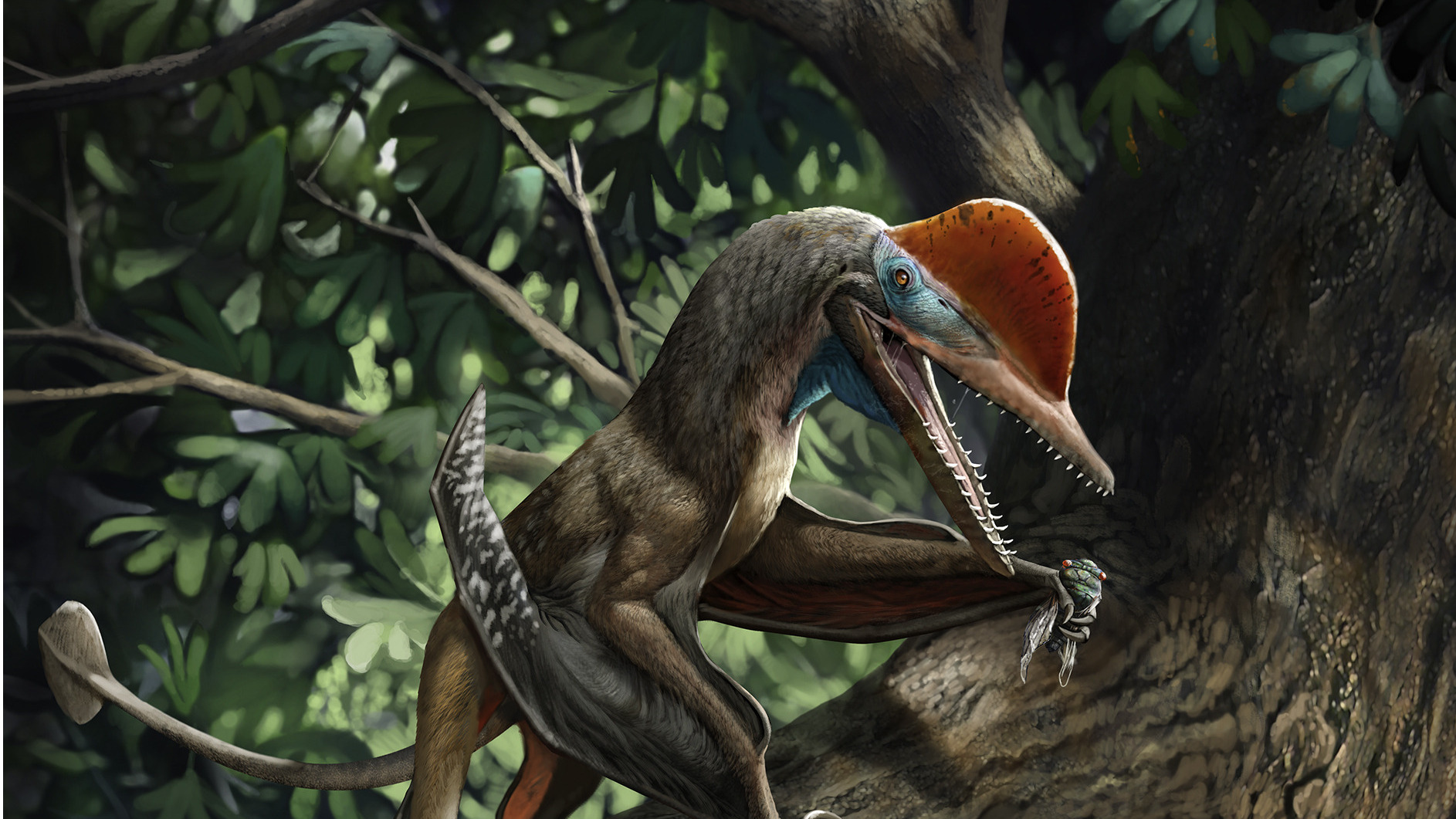Porgs and Dinos and Monkeydactyls OH MY!
Meet some new Pterosaurs!

Chuang Zhao/University of Birmingham
We love a good prehistoric creature here at the Mary Sue, but what might you say to TWO fantastic flying beasts from prehistory that may have looked more like something out of Star Wars than Jurassic Park? I thought you’d be interested.
First up we have a newly discovered Kunpengopterus antipollicatus, but their friends call them Monkeydactyl! Monkeydactyl is a pterosaur; these reptilian dinosaur cousins were the first animals after bugs who developed powered flight. Think reptile bats. Monkeydactyl is unique however because it had something no other pterosaur had: opposable thumbs!
“This is the first discovery of a pterosaur with an opposed thumb. It also represents the earliest record of a true opposed thumb in Earth’s history,” the team of researchers from around the world explained in a press release upon publication of the findings in the journal Current Biology. They add: “A true opposed pollex is mostly present in mammals (e.g. primates) and some tree frogs, but extremely rare among extant reptiles except for chameleons. This discovery adds to the list that darwinopteran pterosaurs such as K. antipollicatus also evolved an opposed thumb.”
That’s why they’re calling this thing a Monkeydactyl, because it may have moved like a monkey, gripping trees and climbing them to survive. The discovery is a huge deal for understanding how dinosaurs evolved.
Our ecomorphological analysis suggests that Kunpengopterus was an arboreal specialist, while Wukongopterus and Darwinopterus were scansorial. We infer that these close relatives probably shared their habitat (the Tiaojishan paleoforest) through niche partitioning. [2/5] pic.twitter.com/uagpRMZKGf
— Rodrigo V. Pêgas (@pegasaurus_42) April 12, 2021
Monkeydacytl’s bones were found in China in 2019. The bones were actually fully encased in rock, so paleontologists had to use micro CT-scanning to create a 3D digital model of the skeleton. “With this detail, we’re able to look at the fossil from any angle, and make sure that the bones are in their right [original] place,” Rodrigo Pêgas, a paleontologist at the Federal University of ABC in São Bernardo, Brazi told Science News.
But amazingly, that’s not the only amazing new pterosaur from China that made a debut this week! This one is from the Mesozoic. And it’s freaking PORG.
This little guy is Sinomacrops bondei. This creature was small, about the size of a sparrow, and probably flew around munching on bugs it was able to track with those big bulging eyes. It was also kind of fluffy. Sinomacrops bondei was part of a subgroup of pterosaurs called Anurognathids, which “are characterized by possessing wide skulls with short snouts and large eyes, fairly short necks, and short tails. Anurognathids have wings that allowed acrobatic flight and are thought to have been aerial hunters of insects. They were quite similar to living swifts, swallows, and nightjars among birds, as well as bats.” They also had very fine feathers, kind of like fur.
So while these guys were smaller than a Porg, they looked a lot like them but also like very cute reptile bats. These fossils were also found encased in stone and were studied using special x-ray imaging. Because the bones of pterosaurs were hollow (like birds) fossilized remains are very rare, so this find, from the Hubei province of China, is very exciting.
So would you rather have a Monkeydactyl or a Mesozoic Porg as a pet?
(via Nerdist, images: Zhao Chuang/University of Birmingham/Current Biology)
Want more stories like this? Become a subscriber and support the site!
—The Mary Sue has a strict comment policy that forbids, but is not limited to, personal insults toward anyone, hate speech, and trolling.—
Have a tip we should know? tips@themarysue.com